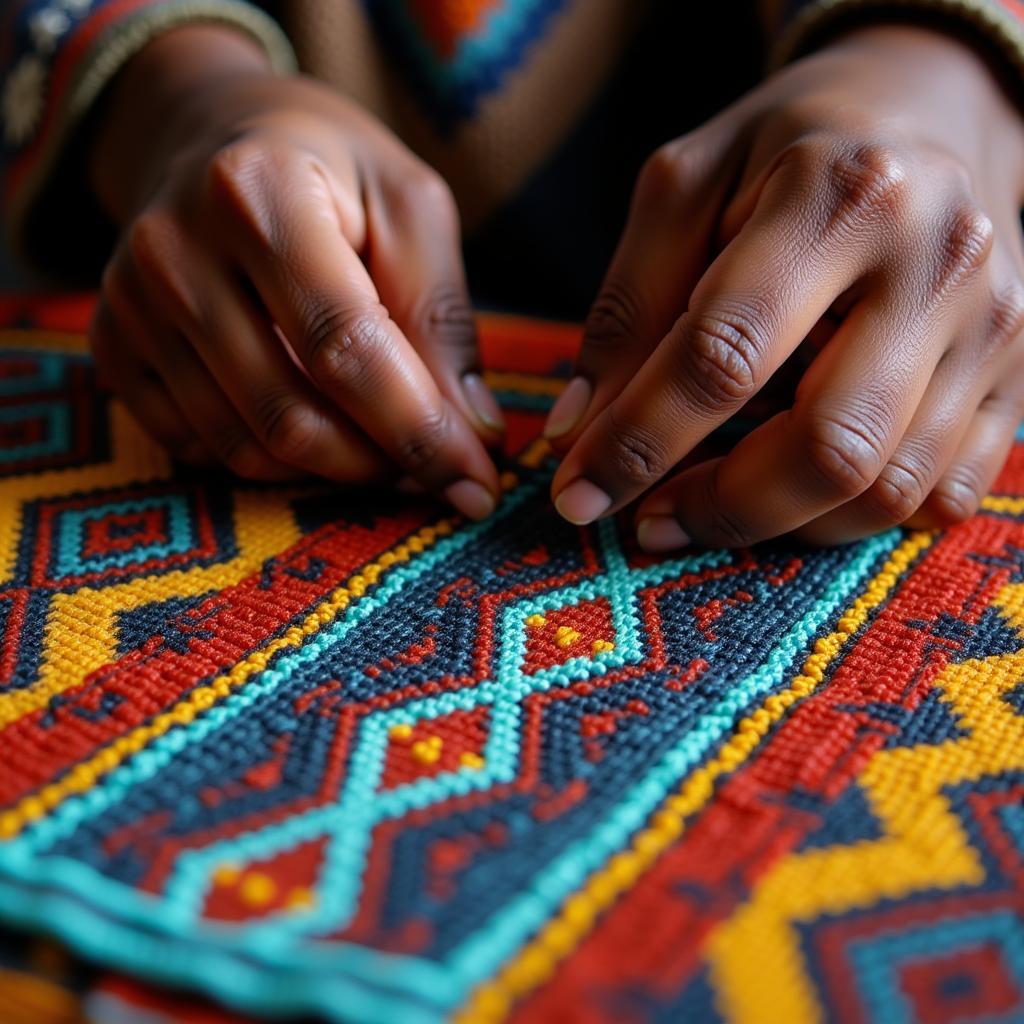Unveiling the Stories Behind African Floor Statues
African Floor Statues, captivating in their intricate designs and powerful presence, are much more than decorative pieces. They are tangible representations of cultural heritage, spiritual beliefs, and artistic excellence passed down through generations across the African continent. These sculptures, often crafted from wood, bronze, or clay, offer a glimpse into the rich tapestry of African Life, reflecting historical narratives, societal values, and the enduring connection between art and spirituality.
Delving into the Significance of African Floor Statues
Across diverse African cultures, floor statues hold profound cultural and spiritual significance. They are not mere objects but are often revered as embodiments of ancestors, deities, or spiritual forces. These sculptures act as intermediaries between the physical and spiritual realms, playing vital roles in rituals, ceremonies, and everyday life.
For instance, among the Yoruba people of Nigeria, elaborate floor statues known as “ere ibeji” represent deceased twins. These figures are meticulously cared for and venerated, believed to hold the spirits of the departed twins and bring blessings to the family.
Similarly, the Baule people of Côte d’Ivoire revere spirit spouse figures, beautifully sculpted floor statues embodying the ideal partner in the spiritual realm. These figures provide comfort, guidance, and protection to their owners.
Exploring the Diverse Styles of African Floor Statues
The artistic styles of African floor statues are as diverse as the continent itself. From the bold, geometric forms favored by the Makonde people of Tanzania and Mozambique to the elegant, elongated figures characteristic of the Dogon people of Mali, each region boasts unique aesthetic traditions.
The choice of materials also varies greatly. While wooden sculptures are prevalent in West and Central Africa, communities in Southern Africa often utilize soapstone or serpentine for their sculptures. Bronze casting, a technique mastered by the Edo people of Nigeria, results in exquisite, highly detailed figures.
The styles and materials employed in African floor statues reflect not only artistic choices but also geographical resources, cultural beliefs, and historical influences. For example, the availability of certain types of wood or the presence of trade routes impacted the materials used and the development of particular styles.
African Floor Statues in Contemporary Art and Design
In recent decades, African floor statues have garnered significant recognition in the global art world. Collectors and museums internationally recognize their artistic merit and cultural significance. This appreciation has led to increased demand for authentic African art, raising ethical concerns about cultural appropriation and the importance of ethical sourcing.
Contemporary African artists also draw inspiration from these traditional forms, reinterpreting and reimagining them in their work. This fusion of tradition and modernity has led to exciting innovations in contemporary African art, with floor sculptures playing a prominent role.
Conclusion
African floor statues are much more than just objects; they are vessels of history, culture, and spirituality. Understanding their significance and appreciating their diverse styles allows us to connect with the rich heritage of the African continent. As these sculptures continue to captivate audiences worldwide, they serve as a testament to the enduring power of African art and its ability to transcend time and place.
FAQs
1. What are African floor statues typically made of?
African floor statues are crafted from various materials, including wood, bronze, clay, soapstone, and serpentine. The choice of material often depends on regional resources, cultural traditions, and the artist’s preference.
2. What is the significance of ancestor figures in African art?
Ancestor figures are prominent in African art and hold deep spiritual significance. They represent deceased family members who are believed to protect and guide their living descendants. These figures are often venerated and play an essential role in rituals and ceremonies.
3. Are African floor statues still used in contemporary African societies?
Yes, African floor statues continue to hold cultural and spiritual significance in many contemporary African societies. They are used in ceremonies, rituals, and everyday life, representing a tangible link to ancestral traditions and beliefs.
Do you have further questions about African art and culture?
Contact us at:
Phone Number: +255768904061
Email: kaka.mag@gmail.com
Or visit us at:
Mbarali DC Mawindi, Kangaga, Tanzania.
Our customer service team is available 24/7 to assist you.



